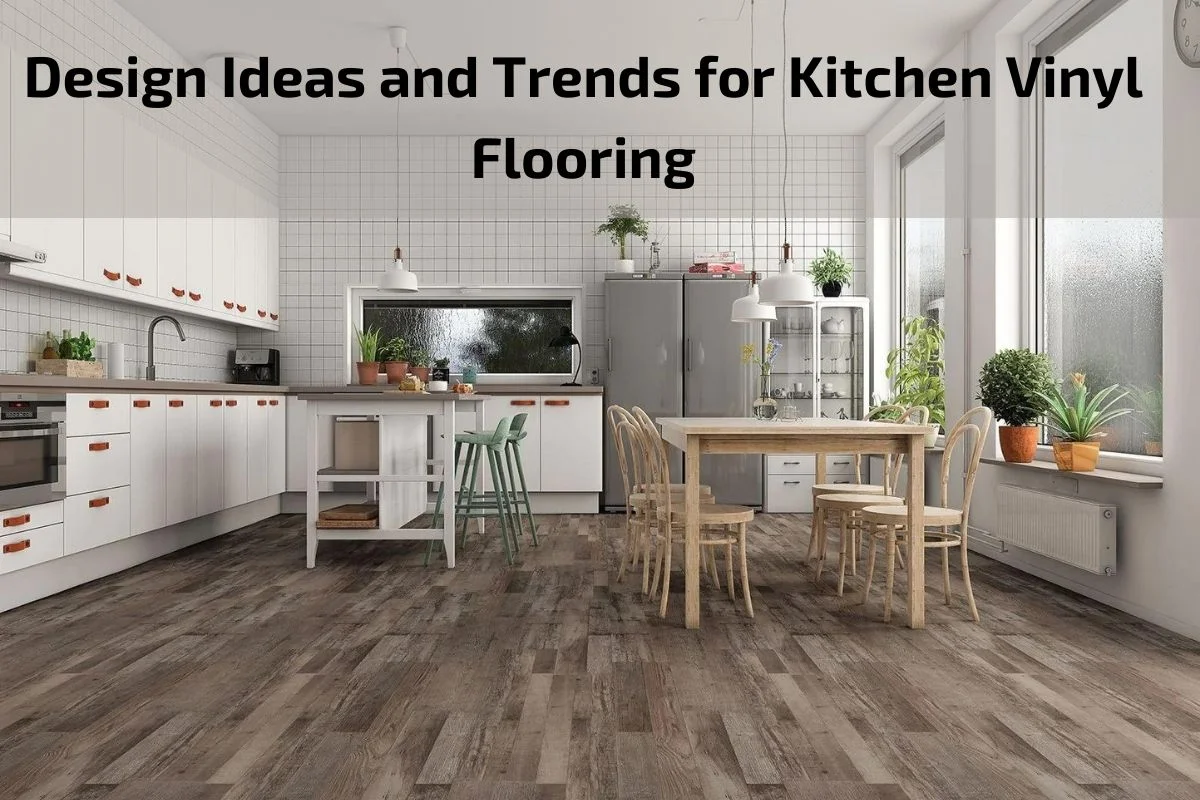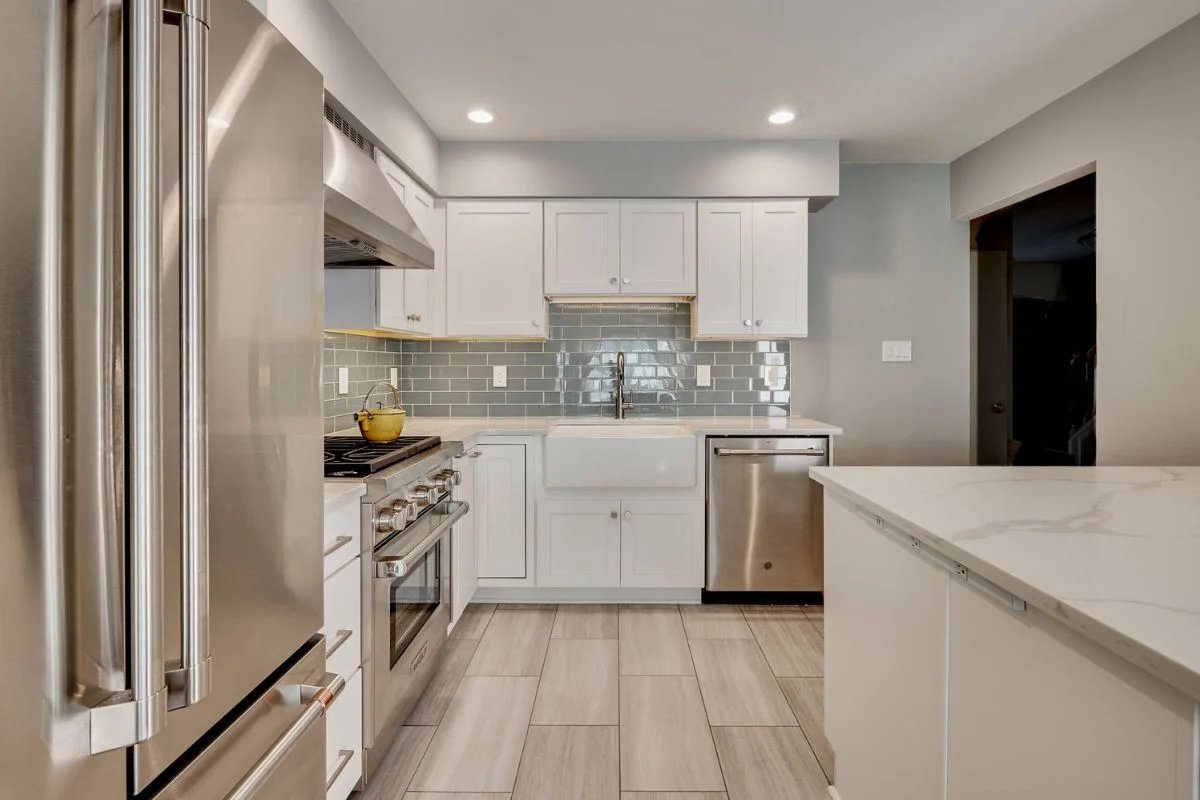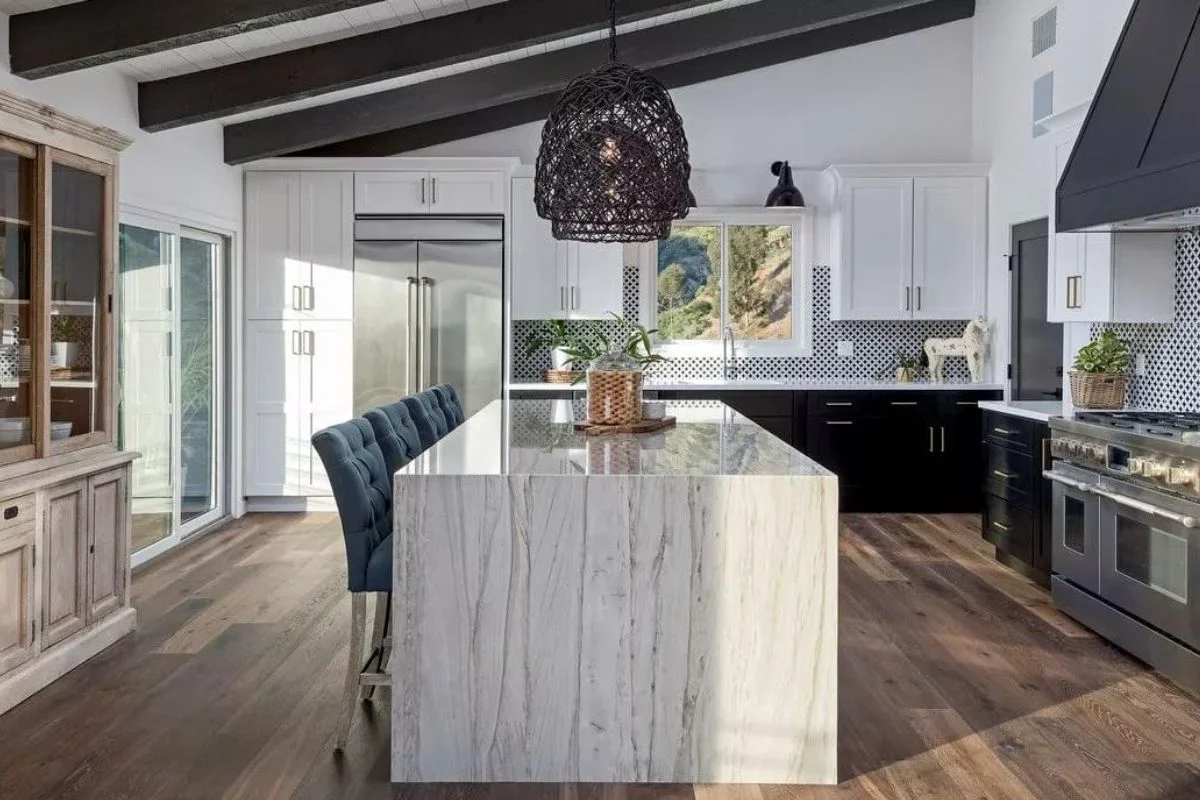
Design Ideas and Trends for Kitchen Vinyl Flooring
The kitchen serves as the heart of the home, a space where culinary creativity meets everyday functionality. As one of the most frequently used areas in the house, the kitchen demands flooring that not only withstands the rigors of daily life but also enhances the overall aesthetics of the space. In recent years, kitchen vinyl flooring has emerged as a popular choice among homeowners and designers alike, offering a winning combination of durability, versatility, and style.
From traditional kitchens to modern culinary havens, the design possibilities with vinyl flooring are virtually endless. With advancements in technology and manufacturing processes, vinyl flooring now offers an array of design options that mimic the look and feel of natural materials such as hardwood, stone, and tile, without the drawbacks of maintenance and cost.
Importance of Kitchen Flooring
The kitchen is undeniably the heart of the home, where families gather to cook, eat, and socialize. As one of the most heavily trafficked areas in the house, the flooring in the kitchen plays a crucial role in both functionality and aesthetics. Here’s why kitchen flooring is so important:
- Durability: Kitchen floors endure a significant amount of wear and tear on a daily basis. From spills and stains to heavy foot traffic and dropped utensils, the flooring must be durable enough to withstand the demands of everyday life. Durable kitchen flooring ensures longevity and reduces the need for frequent repairs or replacements.
- Safety: Safety is paramount in the kitchen, where spills and wet surfaces can create hazardous conditions. The right flooring choice can help prevent slips, trips, and falls, providing a secure environment for cooking and meal preparation. Slip-resistant surfaces and proper installation techniques contribute to a safer kitchen environment for homeowners and their families.
- Hygiene: Kitchens are prone to spills, splatters, and food debris, making cleanliness a top priority. The flooring material should be easy to clean and maintain, allowing for quick and efficient removal of dirt and spills. Hygienic kitchen flooring helps minimize the risk of bacteria growth and food contamination, promoting a healthier living environment for everyone.
- Aesthetics: Beyond its functional role, kitchen flooring also contributes to the overall look and feel of the space. The right flooring choice can enhance the design aesthetic of the kitchen, complementing the cabinetry, countertops, and other elements of the room. Whether you prefer a classic hardwood look, sleek tile, or modern vinyl, the flooring sets the tone for the entire kitchen décor.
- Resale Value: The condition and appearance of the kitchen flooring can significantly impact the resale value of the home. Potential buyers often prioritize updated and well-maintained kitchens when considering a property. Investing in high-quality flooring not only enhances the appeal of the kitchen but also increases the overall value of the home.
Benefits of Kitchen Vinyl Flooring
Kitchen vinyl flooring offers numerous advantages that make it a popular choice among homeowners. Here are some key benefits of choosing vinyl flooring for your kitchen:
- Durability: Vinyl flooring is highly durable and resistant to scratches, stains, and moisture. It can withstand the demands of daily kitchen activities, including spills, foot traffic, and dropped utensils, without showing signs of wear and tear. Its durable surface ensures that your kitchen flooring remains in excellent condition for years to come.
- Water Resistance: One of the primary benefits of vinyl flooring in the kitchen is its water resistance. Vinyl is inherently waterproof, making it an ideal choice for areas prone to spills and moisture, such as the kitchen. It provides a protective barrier against water damage, preventing moisture from seeping into the subfloor and causing issues like warping or mold growth.
- Easy Maintenance: Vinyl flooring is incredibly easy to clean and maintain, requiring minimal effort to keep it looking pristine. Regular sweeping or vacuuming, along with occasional mopping using a mild detergent, is all that’s needed to remove dirt and maintain the flooring’s appearance. Unlike other flooring materials that may require specialized cleaners or treatments, vinyl flooring offers hassle-free maintenance.
- Comfort Underfoot: Kitchen vinyl flooring provides a comfortable surface to stand on, making it easier on your feet and joints, especially during prolonged periods of cooking or meal preparation. Its cushioned underlayment adds a layer of comfort and reduces fatigue, making kitchen tasks more enjoyable and less taxing on your body.
- Design Versatility: Vinyl flooring comes in a wide variety of colors, patterns, and styles, allowing you to achieve the desired look and feel for your kitchen. Whether you prefer the look of hardwood, stone, tile, or unique patterns, there’s a vinyl flooring option to suit your aesthetic preferences. Vinyl flooring offers endless design possibilities, enabling you to customize your kitchen to reflect your personal style.
- Affordability: Compared to other flooring materials like hardwood or ceramic tile, vinyl flooring is a more budget-friendly option. It offers excellent value for money without compromising on quality or durability. With vinyl flooring, you can achieve the look you want for your kitchen without breaking the bank, making it an attractive choice for homeowners on a budget.
- Quick and Easy Installation: Vinyl flooring is relatively easy to install, whether you choose peel-and-stick tiles, click-lock planks, or sheet vinyl. Many vinyl flooring options are designed for DIY installation, allowing homeowners to save on installation costs and complete the project themselves. Professional installation is also available for those who prefer assistance from experts.
Types of Kitchen Vinyl Flooring
When it comes to kitchen flooring options, vinyl offers a versatile and customizable solution that suits various preferences and design aesthetics. Here are the different types of kitchen vinyl flooring available:
Sheet Vinyl Flooring:
- Sheet vinyl flooring comes in large rolls, typically 6 to 12 feet wide, and is installed in one continuous piece.
- It offers seamless coverage, making it ideal for kitchens with minimal seams where water and spills could potentially seep through.
- Sheet vinyl is available in a wide range of colors, patterns, and textures, including realistic wood and stone looks.
Vinyl Plank Flooring:
- Vinyl plank flooring mimics the look and texture of hardwood flooring, featuring individual planks that click together during installation.
- It offers the warmth and elegance of hardwood with the durability and water resistance of vinyl, making it suitable for kitchens.
- Vinyl plank flooring comes in various lengths, widths, and styles, allowing homeowners to create custom looks for their kitchens.
Vinyl Tile Flooring:
- Vinyl tile flooring resembles ceramic or porcelain tile and is available in square or rectangular tiles.
- It offers the durability and water resistance of vinyl with the appearance of traditional tile flooring.
- Vinyl tiles come in a wide array of colors, patterns, and finishes, including textured surfaces that mimic the look and feel of natural stone.
Luxury Vinyl Flooring (LVT):
- Luxury vinyl flooring (LVT) is a premium vinyl product that offers enhanced durability, aesthetics, and performance.
- It features advanced printing and embossing technologies that create realistic textures and patterns, including intricate wood grains and stone textures.
- LVT is available in a variety of plank and tile formats, allowing for endless design possibilities in the kitchen.
WPC and SPC Vinyl Flooring:
- WPC (wood plastic composite) and SPC (stone plastic composite) vinyl flooring are engineered vinyl products designed for enhanced stability and durability.
- They feature a rigid core construction that provides added strength and dimensional stability, making them suitable for high-traffic areas like the kitchen.
- WPC and SPC vinyl flooring offer water resistance, ease of installation, and realistic visuals that emulate the look of hardwood, stone, and tile.
Installation Process Vinyl Flooring
Installing vinyl flooring in the kitchen is a straightforward process that can be completed by DIY enthusiasts or professional installers. Here are the general steps involved in the installation of vinyl flooring:
Preparation:
Prepare the subfloor by ensuring it is clean, dry, and level. Remove any existing flooring material, adhesive residue, or debris.
Check for imperfections or unevenness in the subfloor and address them as needed. Use a self-leveling compound or patching compound to fill in any gaps or low spots.
Acclimation:
Allow the vinyl flooring material to acclimate to the room temperature and humidity levels for at least 48 hours before installation. This helps prevent expansion or contraction of the flooring after installation.
Underlayment Installation (if applicable):
Install a suitable underlayment material over the prepared subfloor to provide cushioning, noise reduction, and moisture protection. Underlayment may be required depending on the type of vinyl flooring being installed.
Layout Planning:
Plan the layout of the vinyl flooring by measuring the dimensions of the kitchen and determining the starting point for installation. Consider the direction of the planks or tiles to achieve the desired visual effect.
Cutting:
Measure and cut the vinyl flooring planks or tiles to fit around obstacles such as cabinets, appliances, and doorways. Use a utility knife, straight edge, and cutting mat to make precise cuts.
Adhesive Application (for sheet vinyl):
Apply the recommended adhesive to the subfloor using a notched trowel, following the manufacturer’s instructions for coverage and drying time. Allow the adhesive to set to the appropriate tackiness before laying the vinyl.
Installation:
Begin laying the vinyl flooring from the starting point determined during layout planning. For plank or tile vinyl flooring, interlock the edges of the planks or tiles according to the manufacturer’s instructions.
Press the vinyl flooring firmly into place, ensuring a snug fit and minimal gaps between the seams. Use a tapping block and rubber mallet to secure the planks or tiles together, if necessary.
Seaming and Heat Welding (for sheet vinyl):
If installing sheet vinyl flooring, align the seams carefully and use a seam roller to press them together firmly. Apply heat welding along the seams using a heat gun to create a seamless and watertight bond.
Finishing Touches:
Install transition strips or moldings around the perimeter of the kitchen to cover expansion gaps and create a finished look. Caulk around the edges of appliances and fixtures to prevent moisture infiltration.
Cleaning and Maintenance:
Once the vinyl flooring is installed, clean up any adhesive residue or debris and allow the flooring to settle for 24-48 hours before walking on it. Follow the manufacturer’s recommendations for cleaning and maintenance to keep the flooring looking its best.
Maintenance Tips Vinyl Flooring
Vinyl flooring is renowned for its durability, water resistance, and low maintenance requirements, making it an ideal choice for kitchens. To ensure that your vinyl flooring remains in pristine condition for years to come, follow these maintenance tips:
Regular Cleaning:
Sweep or vacuum the vinyl flooring regularly to remove dirt, dust, and debris that can scratch or dull the surface.
Use a soft-bristle broom or a vacuum cleaner with a brush attachment to gently remove dirt and particles without causing damage to the flooring.
Mopping:
Mop the vinyl flooring with a damp mop and a mild cleaning solution as needed to remove stubborn dirt or stains.
Avoid using abrasive cleaners, bleach, ammonia, or wax-based products, as they can damage the vinyl surface or leave a residue.
Spill Cleanup:
Clean up spills and liquid messes promptly to prevent them from seeping into the seams or causing stains.
Use a soft cloth or sponge to blot up spills, rather than wiping or rubbing, to avoid spreading the liquid and causing further damage.
Avoid Harsh Chemicals:
Avoid using harsh chemicals, abrasive cleaners, or scouring pads on vinyl flooring, as they can scratch or dull the surface.
Use cleaning products specifically formulated for vinyl flooring, or mild soap and water, to maintain the integrity and appearance of the flooring.
Protect High-Traffic Areas:
Place rugs or mats in high-traffic areas such as entryways, in front of the sink, or near cooking areas to protect the vinyl flooring from excessive wear and tear.
Choose rugs or mats with non-staining backings to prevent discoloration or damage to the flooring.
Furniture Pads:
Attach felt pads or furniture glides to the legs of chairs, tables, and other furniture to prevent scratching or indentations on the vinyl flooring.
Periodically check and replace the pads as needed to ensure continued protection of the flooring surface.
Avoid Sharp Objects:
Avoid dragging heavy furniture or sharp objects across the vinyl flooring, as they can cause scratches, gouges, or tears.
Use furniture sliders or lift heavy objects when moving them to prevent damage to the flooring surface.
Manage Moisture:
Wipe up spills and moisture promptly to prevent water damage or warping of the vinyl flooring.
Use mats or rugs in front of sinks, dishwashers, and other areas prone to water exposure to absorb excess moisture and prevent slipping hazards.
Routine Inspection:
Periodically inspect the vinyl flooring for signs of wear, damage, or loose seams. Address any issues promptly to prevent further damage and maintain the integrity of the flooring.
Professional Maintenance:
Consider professional cleaning and maintenance services for deep cleaning or restoration of the vinyl flooring, especially in high-traffic or heavily soiled areas.
Conclusion
In conclusion, vinyl flooring offers a versatile, durable, and stylish option for kitchens, meeting the demands of modern lifestyles while providing practical solutions for busy households. Throughout this exploration, we’ve delved into the importance of kitchen flooring and the numerous benefits that vinyl flooring brings to the table




0 comments